Ampelous begonia - growing and care
Despite the difficult care of ampelous begonia, it increasingly appears in our homes. Spectacular flowers of unusual shape, painted in various tones of burgundy, orange and red, captivated the hearts of our women.
Content:
- Spring and summer care for ampelous begonia
- Caring for begonia ampelous in winter
- How easy it is to propagate ampelous begonia
If there is a desire to grow ampelous begonia on your windowsill, you need to take care of its location. The fact is that she loves abundant sunlight. The more sun hits the plant, the larger the flowers.
Ampelous begonia blooms from spring to almost the end of autumn. Each flower individually lives for about 10 days. A new flower soon appears in the place of a withered flower. This process continues for a long period, which provides the plant with abundant flowering until late autumn.
Spring and summer care for ampelous begonia
Ampelous begonia loves comfort and attention. It is advisable to plant it in a hanging pot or in a vase on a long stand. The plant sprouts long shoots (30-40 cm), which hang down in cascades. Begonia will delight you with magnificent flowers if the room is warm enough (+ 18-20 degrees) and fresh.
In the summer, you can put a pot of ampelous begonia in the yard so that it "breathes" fresh air. Only the place for the pot you need to choose is sunny, calm and without drafts. Begonia is a very delicate plant, it is afraid of rains and strong winds. When inclement weather begins, it is better to bring the flower pot to a sheltered room.
There are many varieties of begonias. Almost all of them are capricious and demanding to care for. For beginners who first met this plant, it will be difficult to comply with all the conditions that are necessary for the full growth of begonias.
Begonia loves abundant watering and the roots of the plant should not be allowed to dry out - this will lead to the inevitable death of the flower. From time to time, the leaves of the plant need to be sprayed with a spray bottle, and sometimes - to arrange a warm shower for them. This will have a beneficial effect on their color, which will become even more saturated and bright.
As for the soil, ampelous begonia prefers nutritious and rather loose soil with a slightly acidic reaction.
It happens that all the conditions for growth have been created for the begonias, but it continues to wither: the leaves at the tips dry out and turn yellow, the flowers fade, and the stems stretch unnaturally. This can be due to several reasons:
- there is not enough sunlight for the flower. It is necessary to place the begonia pot closer to natural light, and on sunny days - to take it out into the yard for sunbathing;
- the flower does not have enough space in the pot. Begonia must be transplanted into a large container;
- the plant lacks nutrients. Some types of begonias need frequent fertilizing with mineral fertilizers. These types include tuberous begonia.
In early spring, the begonias should be fed with nitrogen to stimulate growth. In the spring-summer season, it is fed with organic fertilizers. Fertilizer is applied only to wet soil.
Ampelous begonia is often subject to disease. Her worst enemies are powdery mildew and gray rot.
Caring for begonia ampelous in winter
In winter, for ampelous begonia, you need to provide a cozy place with good lighting.If you have an insulated balcony, you can leave the begonias there, but when the balcony opens, the begonias should be taken away. It is very sensitive to low temperatures and drafts.
In winter, begonia does not bloom, but due to the lush greenery, it looks quite decorative. Watering begonias do not stop, but make it more moderate. Water the plant as the top soil layer dries. To prevent begonia from experiencing constant "thirst", do not place it near heating appliances.
If the begonia shoots stretch out during the winter, then in mid-February they can be cut. But the plant should not be cut very short. It is necessary to leave 3-4 internodes on each shoot.
How easy it is to propagate ampelous begonia
Propagate ampelous begonia seeds, cuttings and tubers (some types).
Begonia seeds are small and for sale they are usually coated (coated). Seeds are sown in a loose, moist substrate and do not sprinkle, because they germinate better in the light.
Ampelous begonia is easily propagated by cuttings. This can be done throughout the year. Cuttings planted in spring take root most quickly.
Cuttings up to 10 cm long are cut from the winterized plant and lowered into water. After 9-10 days, small roots appear on the cuttings. They can already be planted in the ground, having specially prepared a nutrient composition for this. In order for the roots to take root reliably, you need to water them with warm water.
To make the begonia lush and beautiful, 5-6 pieces of rooted cuttings are planted in a spacious pot. The tops of the cuttings can be pinched, then the plant will look more luxurious, but the flowering will be delayed for 2-3 weeks.
If you devote enough time to ampelous begonias, it will generously reward with wonderful flowers, give a sea of positive emotions and create a good mood.



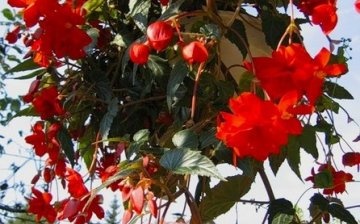
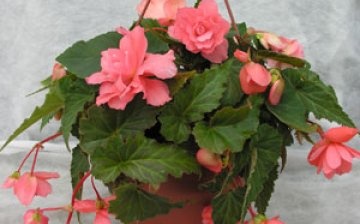
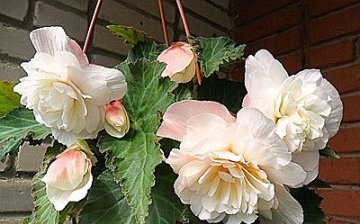
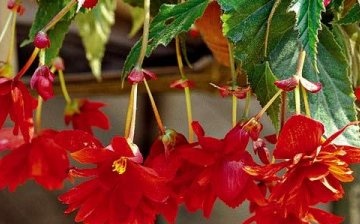




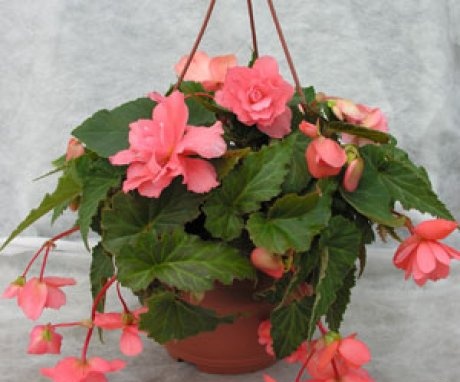
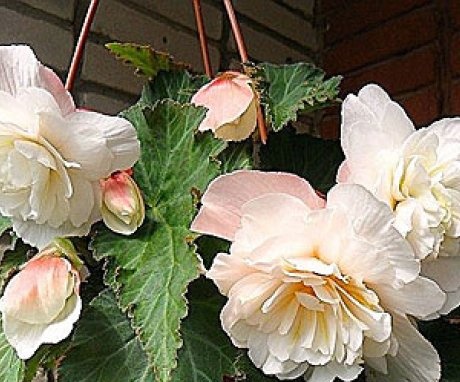
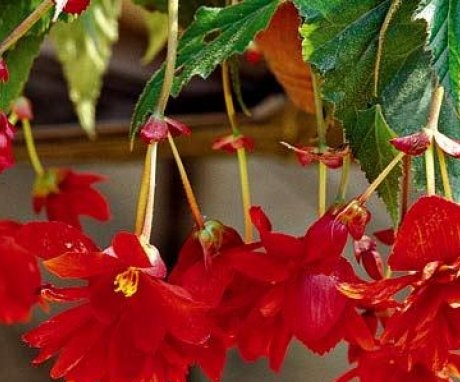
I love begonia very much: I consider it the best choice for novice florists. For reproduction, I take cuttings and leaves from friends. Everything takes root perfectly. But, no matter how many tried to take begonia tubers in the store, the result was negative. Begonia either simply did not sprout, or died soon after the first leaves appeared. What can you advise?